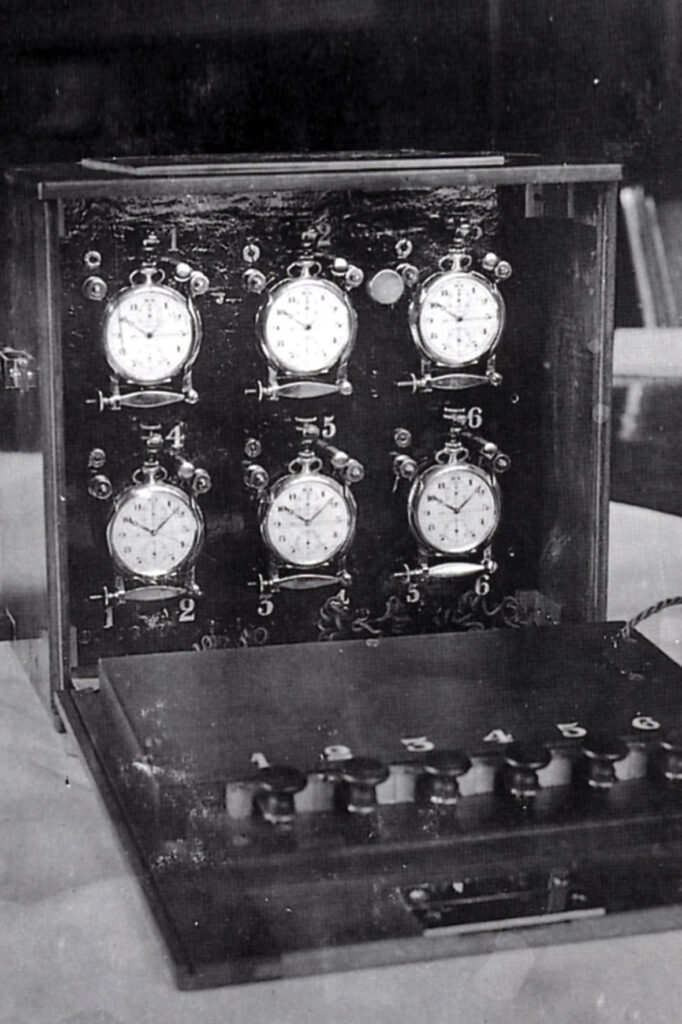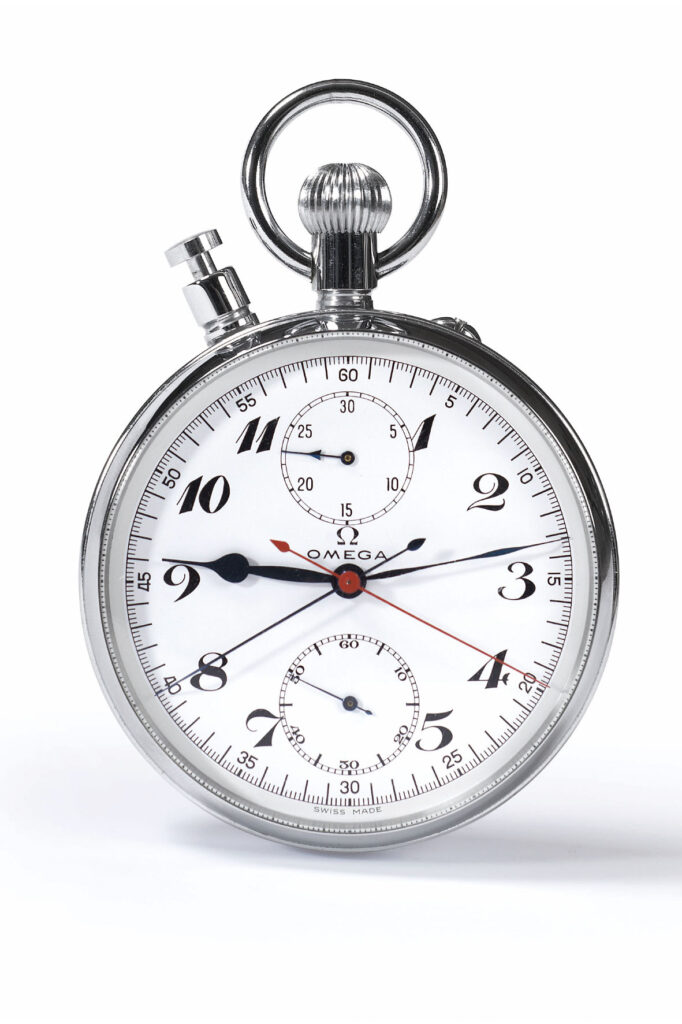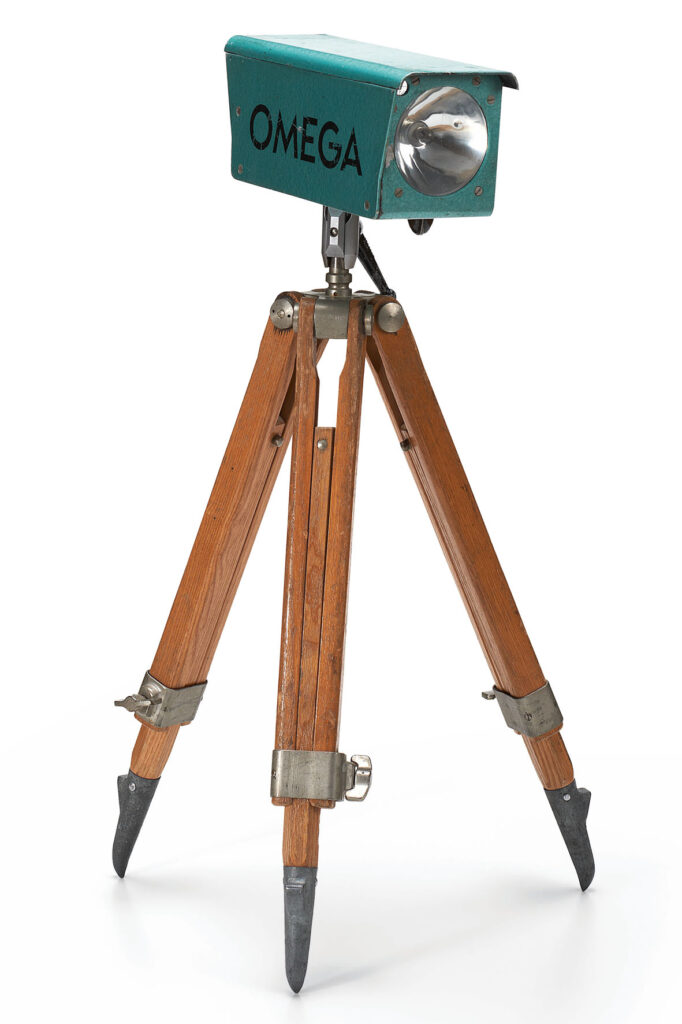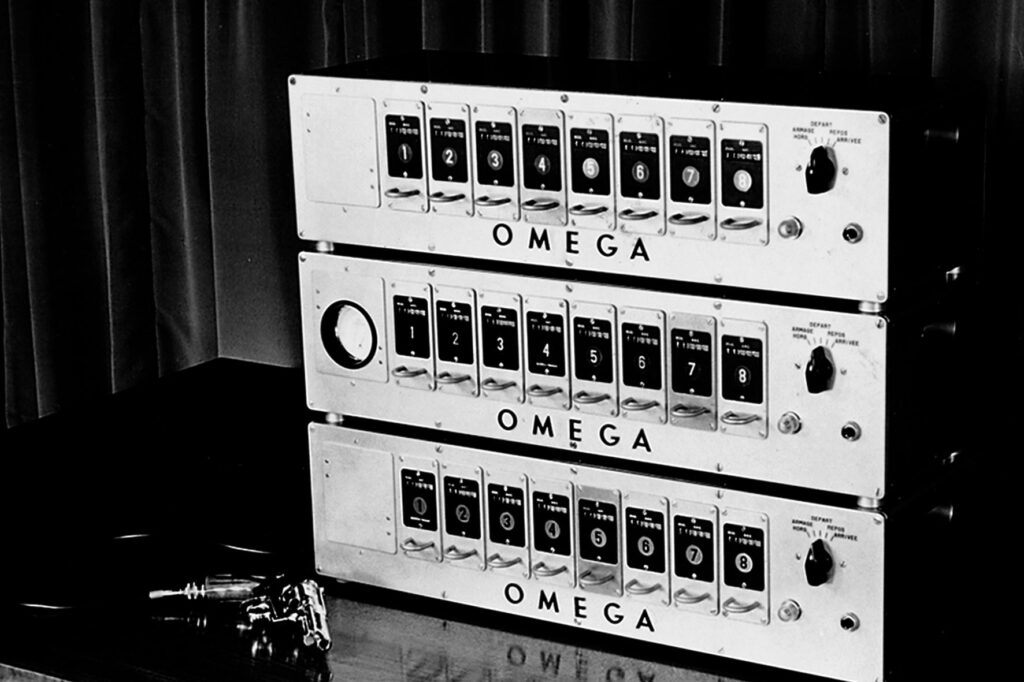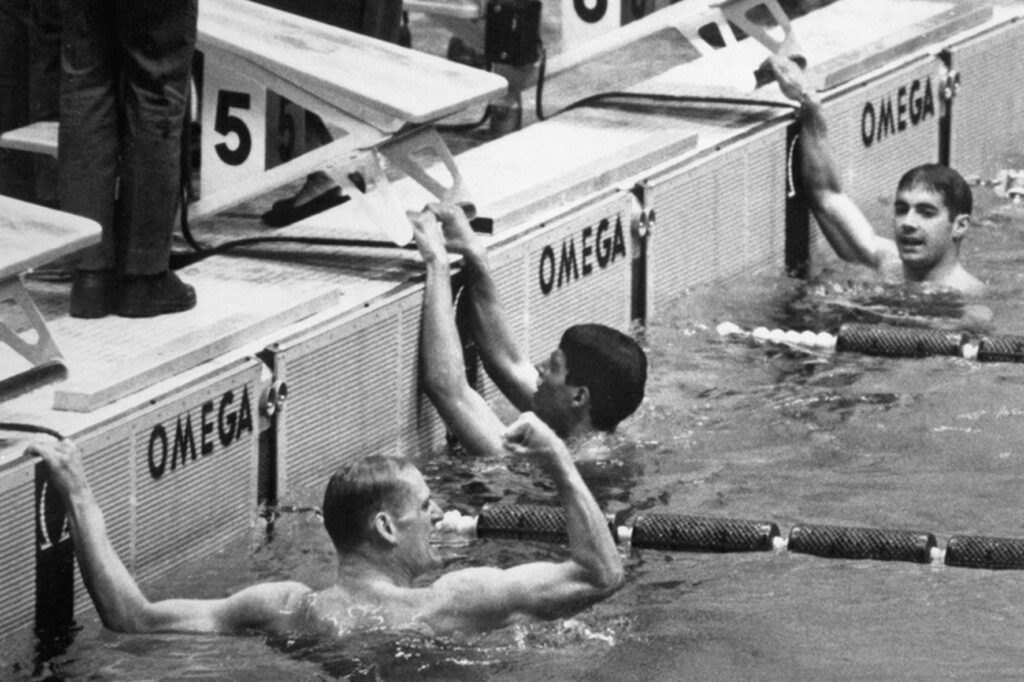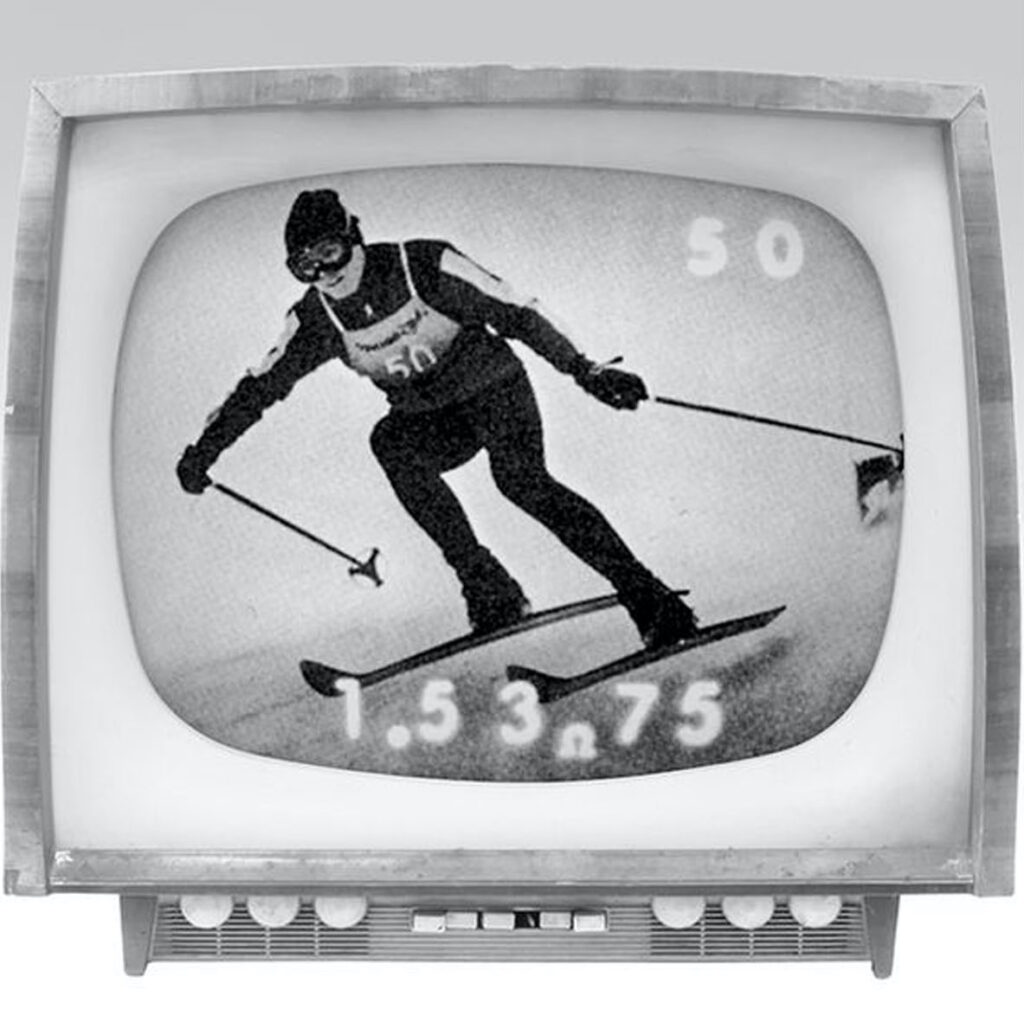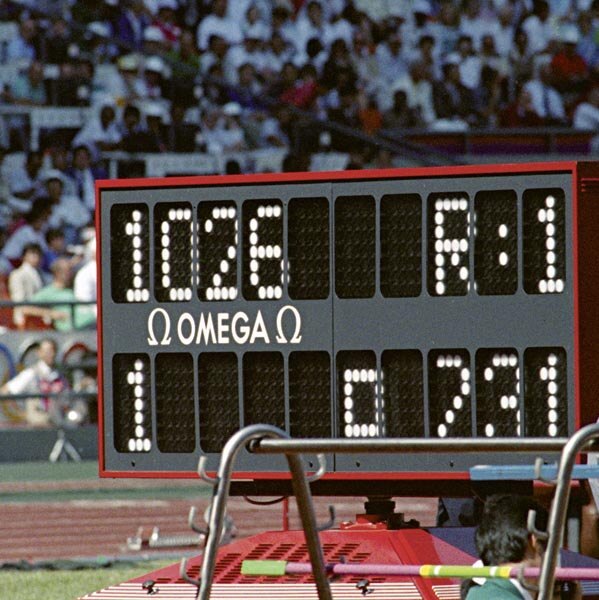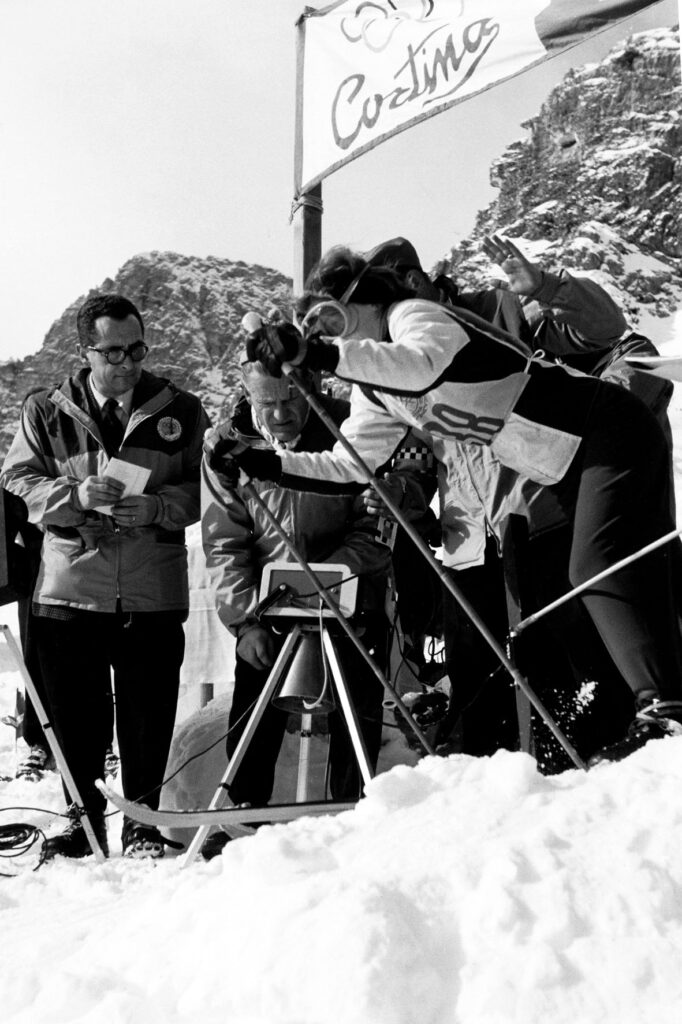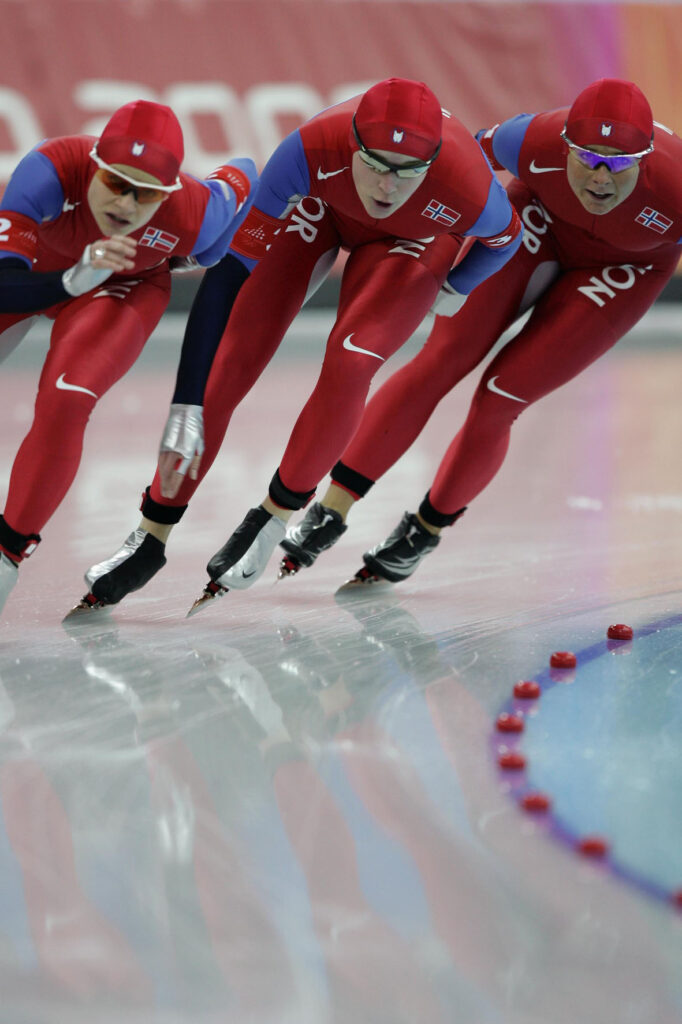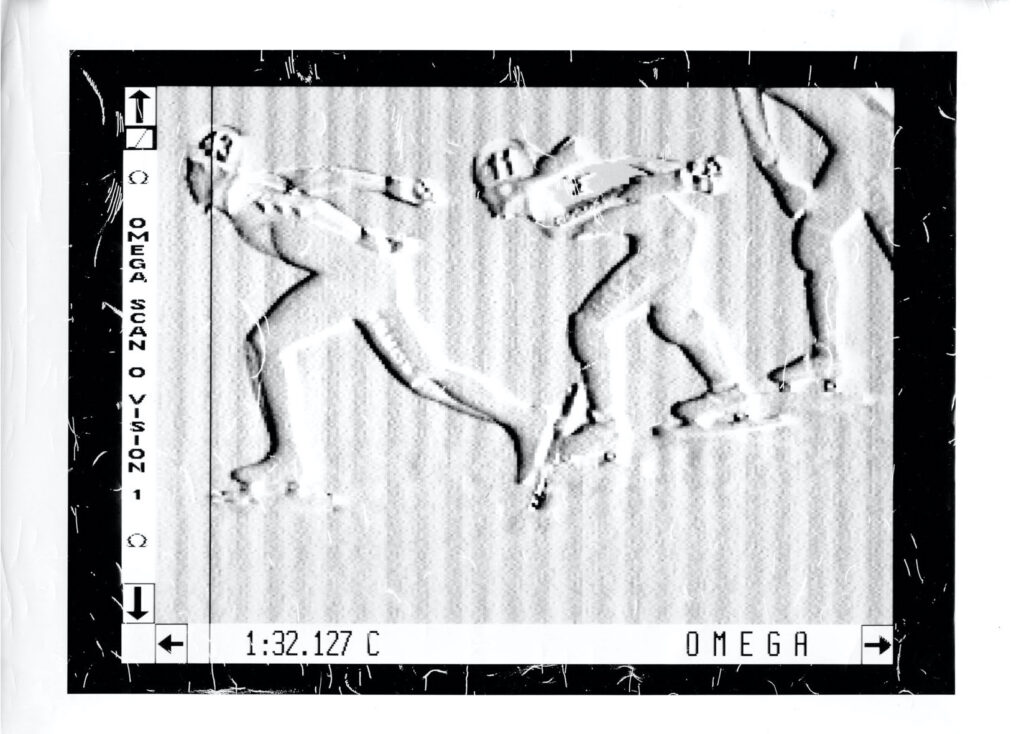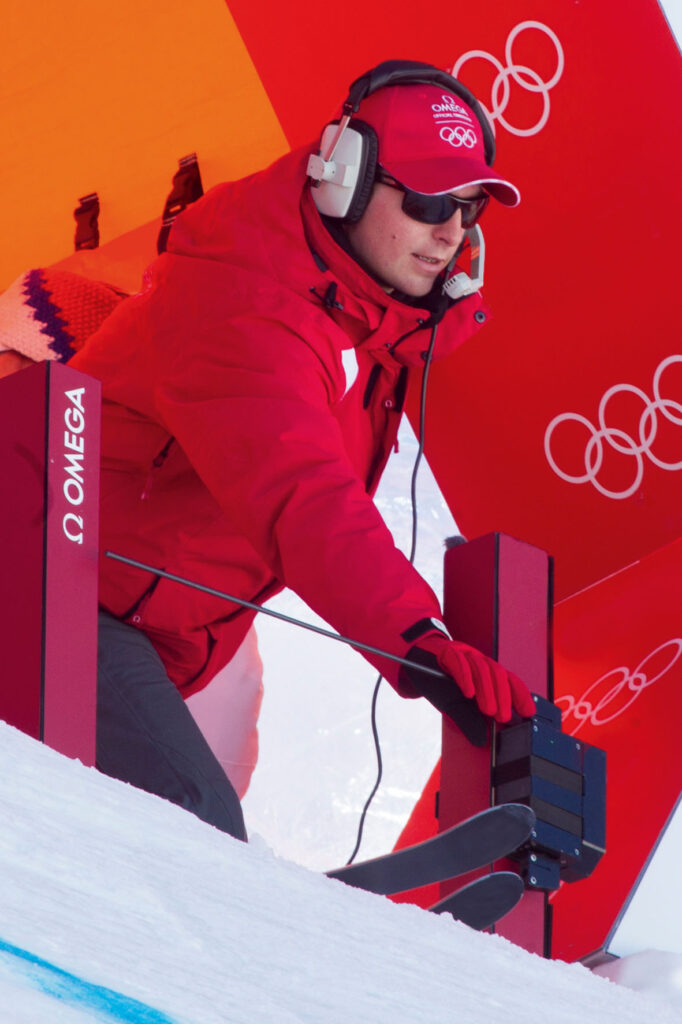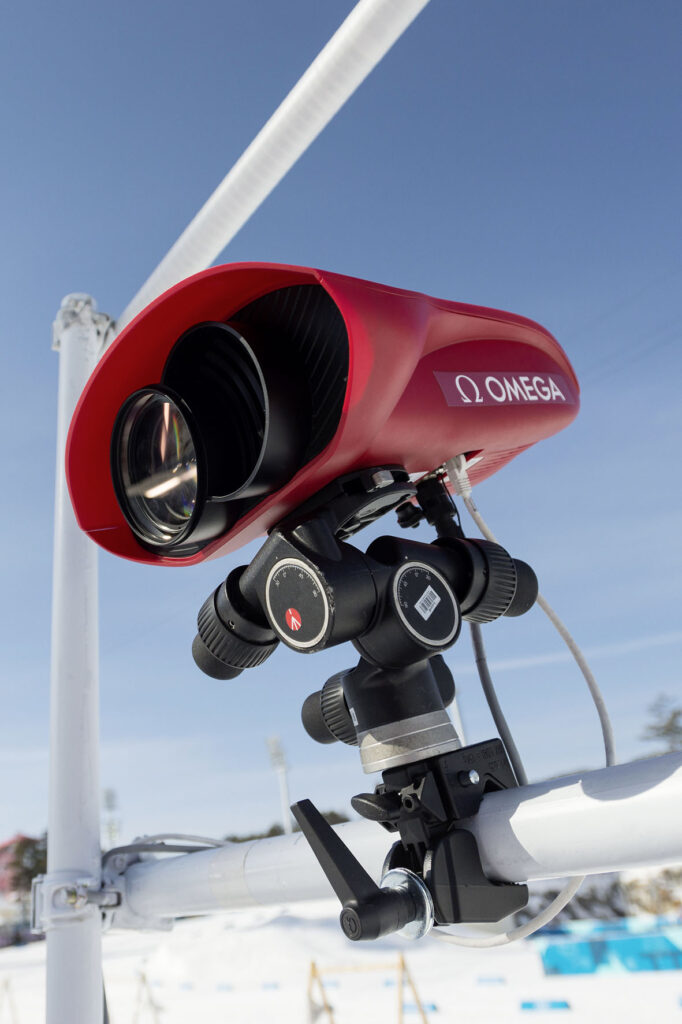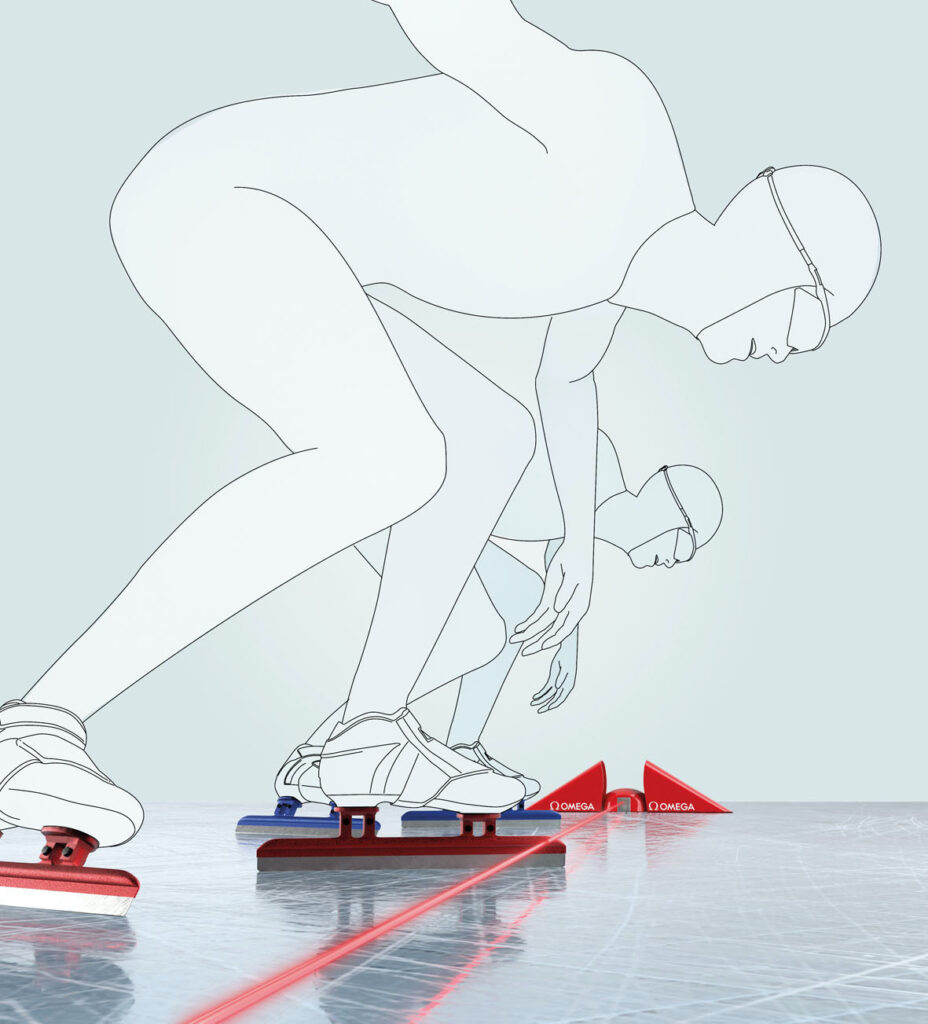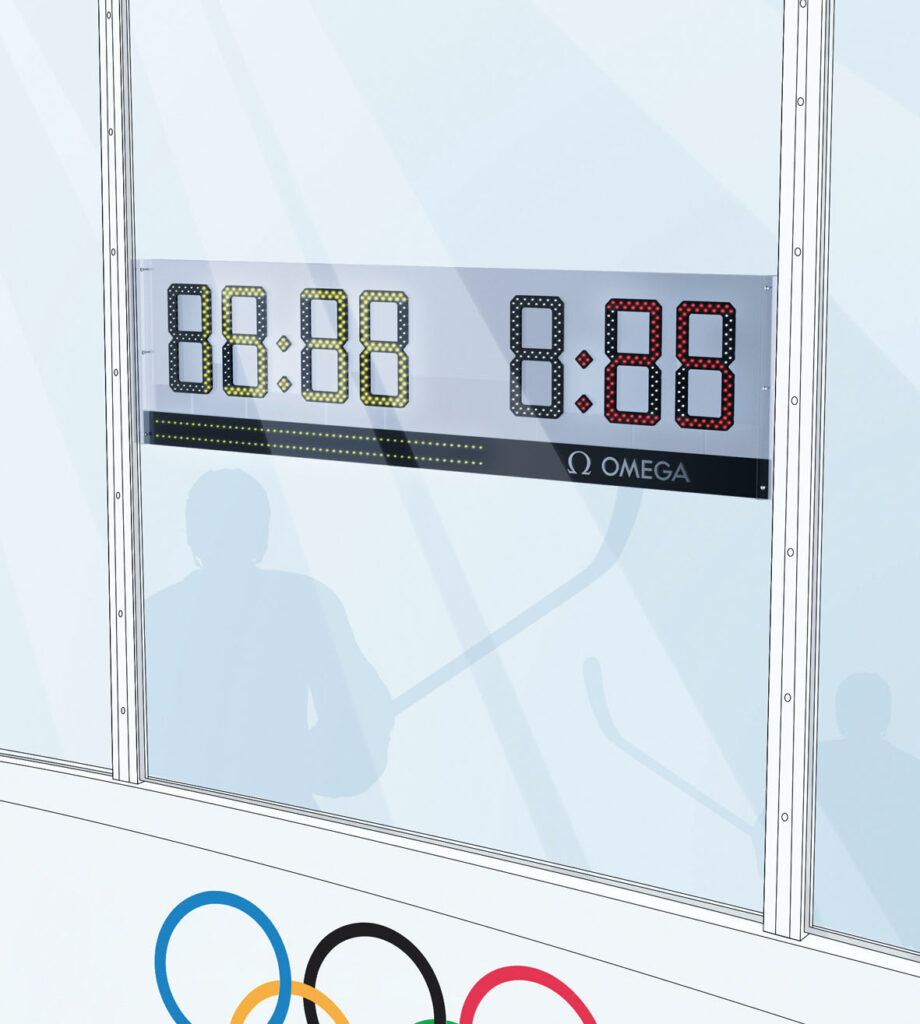Omega at the Olympics: Ninety Years of Performance and Successes
11 February 2022Once upon a time there was a Swiss watchmaker who left a small town in the canton of Bern, Bienne, to cross the Atlantic Ocean with a precious briefcase. He came from the Omega factory and was headed to Los Angeles. It was the summer of 1932 and that gentleman was not going on vacation, but to work. His task was very important: timing the competitions at the Los Angeles Olympics.
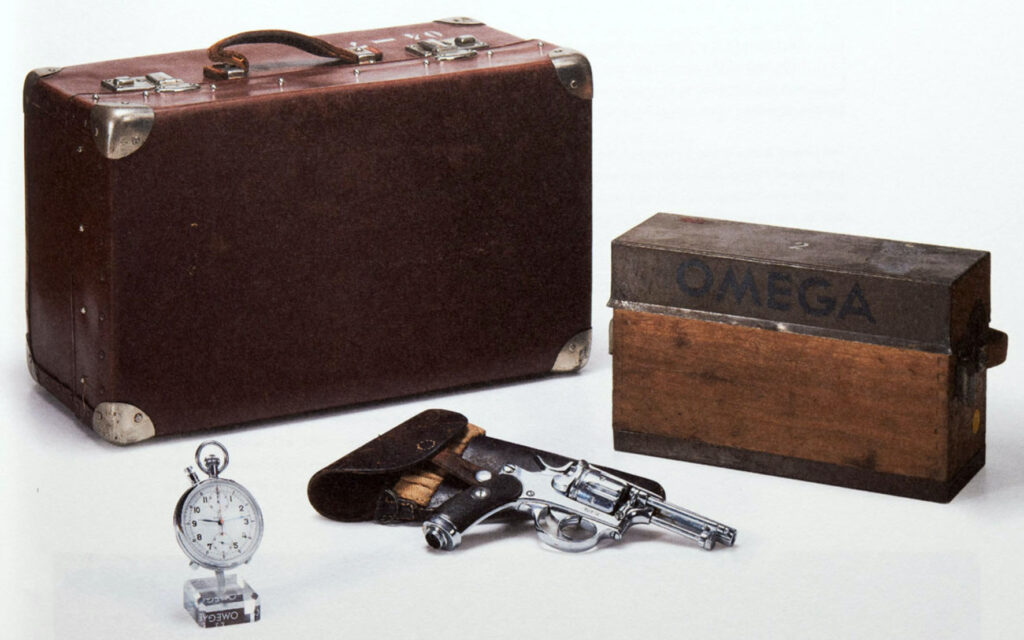
In the briefcase – which it is said that he also slept with, so valuable was its content – he kept thirty chronometers. They were the state of the art of precision (they had an approximation to the tenth of a second), and with those instruments Omega played one of the most important cards in its history: as the first official timekeeper of the Olympics, Omega had the opportunity to play that role permanently.
A LONG-LASTING TIE
90 years have passed since then, and the Olympics have traveled the world several times, in summer and winter. Until 1992, the Summer and Winter Games were held on the same year, separating only from Lillehammer 1994 on; what has not been separated, however, is Omega’s tie with the Games. Heading to the century of life: in 2017 the brand renewed its partnership with the International Olympic Committee until 2032. In the next ten years, during the Summer and Winter Games, Omega will time Paris 2024, Milano-Cortina 2026, Los Angeles 2028 and Brisbane 2032.
Over only a few months, due to the pandemic, Omega has been involved in two editions of the Olympics, Tokyo 2020 and, in this period, Beijing 2022. Its adventure at the Winter Games also began almost a century ago, in Garmisch-Partenkirchen, in 1936 – the edition following Los Angeles 1932: the scrupulous timekeeper who departed from Switzerland and his chronometers had done an excellent job. In Germany, the Omega watchmaker brought 27 stopwatches, and from then on, the partnership between the brand and the Olympic Games was concluded, both for the winter and the summer events.
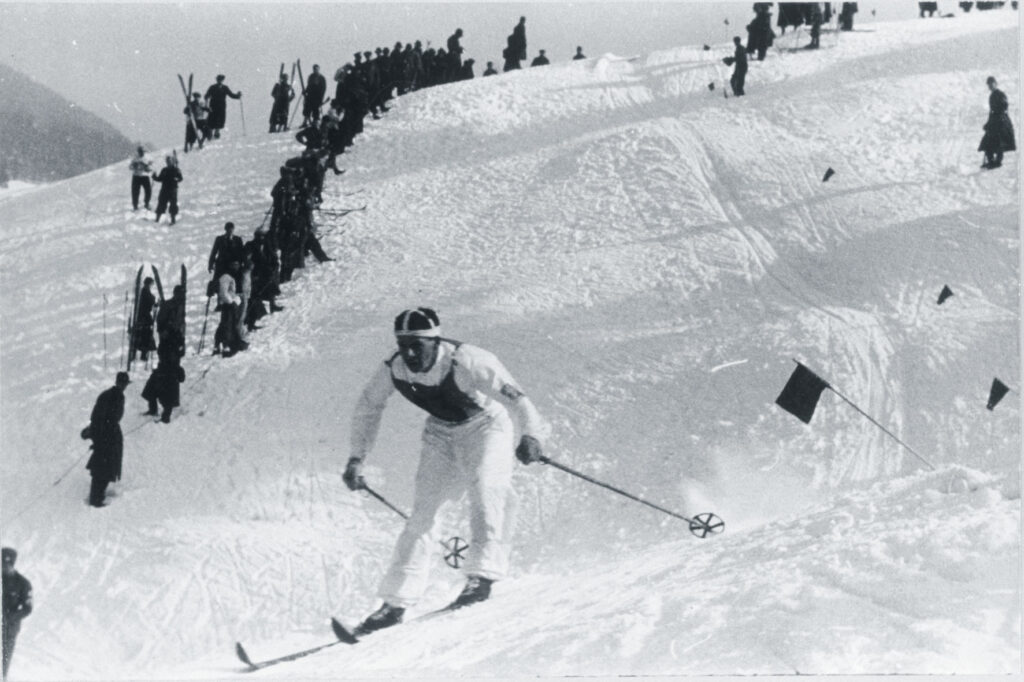
In Garmisch-Partenkirchen, as for timekeeping everything was new: environmental conditions, weather, types of races. Especially in alpine skiing, there was an entire world to literally invent. Without a telephone or a radio connection between the start and the finish lines, the Omega staff wrote down on a piece of paper the exact start time of an athlete’s descent, and sent it to the race judges at the finish line in the pocket of the following skier.
OMEGA BRINGS TECHNOLOGY TO THE OLYMPICS
Omega treasured the experience of Los Angeles and Garmisch-Partenkirchen, but had to postpone its return to the Olympics for 12 years: the Second World War canceled the next editions of the Games until London 1948. In the British capital, the Maison launched the electronic timing era, thanks to the introduction of two new technologies: the photo finish and the photoelectric cell, which electronically stopped the chronometer when the first athlete crossed the finish line.
From that edition onwards, there has been continuous progress, constant improvement. In Helsinki 1952, as a sign of appreciation for its 20 years at the Games, Omega was awarded the Cross of Merit by the IOC for “exceptional services provided to the world of sports.” That’s also thanks to innovations such as the Omega Time Recorder, an electronic chronograph equipped with a high-speed printer to time competitions and instantly print the results to the hundredth of a second.
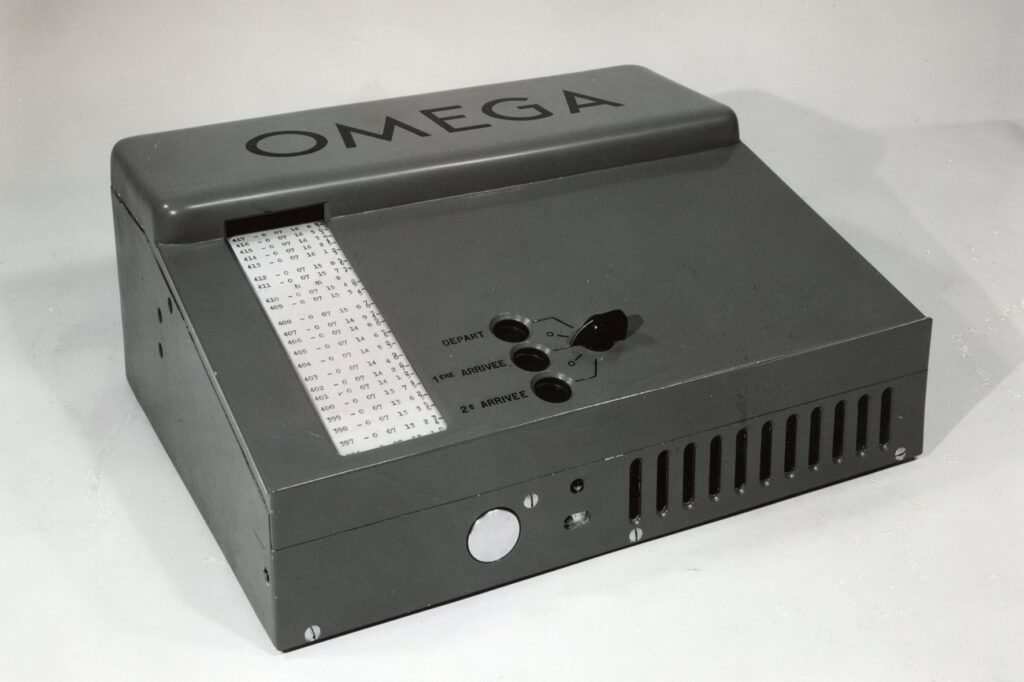
In Melbourne 1956, swimming benefited from Omega’s new technologies. The Swim Eight-O-Matic Timer was the first semi-automatic chronometer in the world for competitions in this discipline: when the starting pistol was triggered, the start time was automatically activated; the counters at the finish line were stopped by manual electric chronometers.
THE REVOLUTION STARTED WITH SKIING
The real revolution started by Omega, however, took place in 1964 during the Winter Games in Innsbruck. The television audience discovered the Omegascope technology, with which the results were communicated in real time thanks to the on-screen text in the lower part of the screen. In Montreal 1976, the audience at the stadium was able to see for itself for the first time with the Video Matrix scoreboard. It displayed timing, scores and rankings, and broadcasted black and white video recordings; it was designed for multiple alphabets and relayed information to the entire Stade Olympique.
In between, in Mexico City 1968, eight years after Melbourne, the timing of swimming competitions had reached an additional level of precision thanks to the touch plates. 90 cm high and 240 wide, they were immersed in water for two thirds of their surface. They reacted to the slightest touch of the athletes who, having reached the finish line, stopped the count by touching them with their hand.
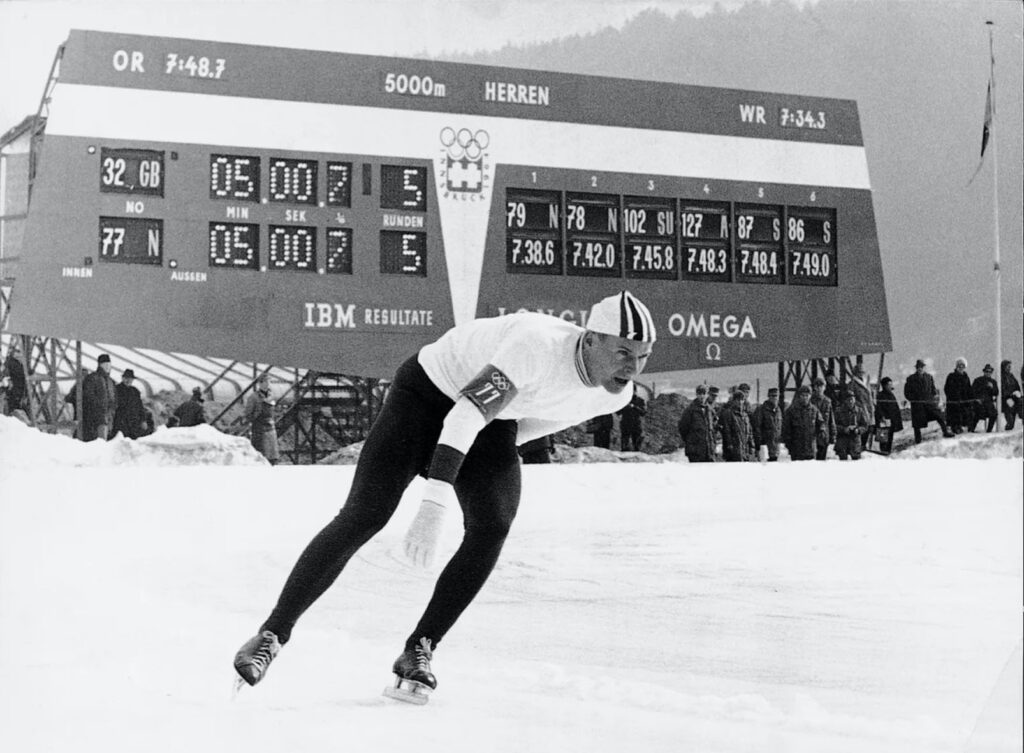
Just as Omega’s technology revolutionized the finish line in swimming in Mexico, in Los Angeles 1984 it revolutionized the start in athletics, thanks to the first false start detector. This extremely sensitive device worked by measuring the pressure exercised by each athlete on the starting blocks, detecting the reaction time and recording any irregularities.
OMEGA IN THE COMPUTER AGE
Four years later, in Seoul, Omega introduced computerized timekeeping for the first time. Instead of simply measuring, attributing and printing times, it digitally recorded information and statistics for a better understanding of each sport. The brand provided real-time information to the spectators in the stadium, thanks to the new Video Matrix scoreboard – an evolution of the Montreal one – which transmitted images and videos in color.
Coming to the 2000s and the first Winter Games that took place in Italy 50 years after Cortina 1956, in Turin 2006 Omega returned for the first time since 1992 to be the Official Timekeeper of all Olympic events. It introduced its most important innovation in speed skating, where special transponders were worn on the competitors’ ankles and were able to send and receive radio signals, allowing Omega to capture specific time measurements.
The accuracy of the chronometric measurements reached unseen levels in London 2012, thanks to the Quantum Timer Omega, which offered an enhanced resolution of one millionth of a second. Driven by a micro crystal component imbedded in the timer, it was five times more accurate than previous versions.
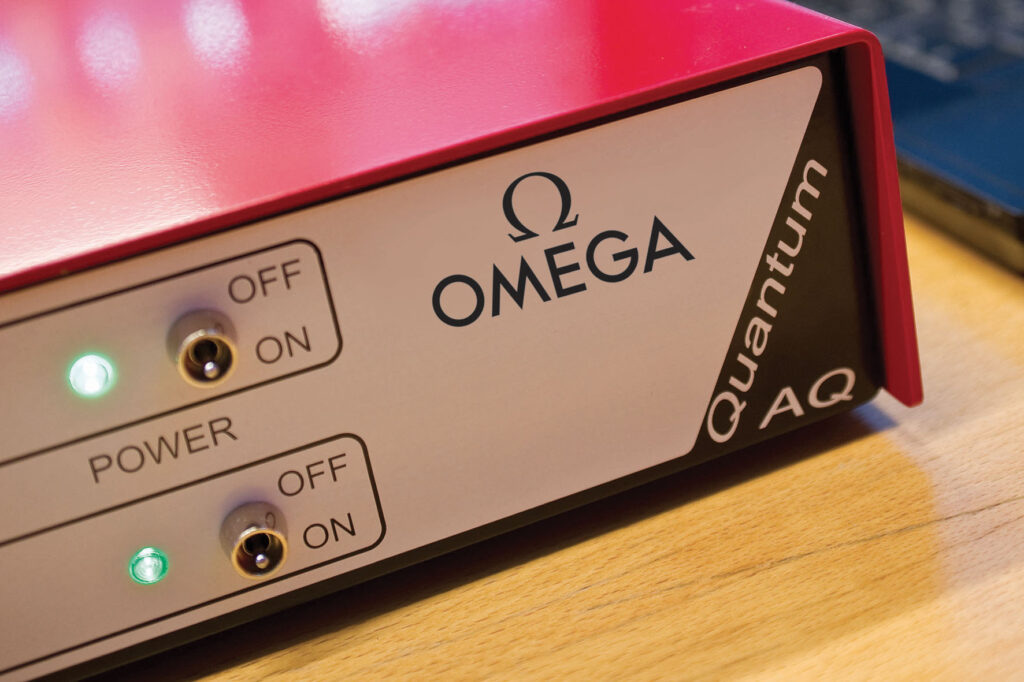
THE MOST RECENT OLYMPICS
The PyeongChang 2018 Winter Games and the Tokyo 2020 Summer Games marked the widespread use of motion sensors and positioning systems. Thanks to their use, Omega was able to provide constant performance measurements for each competitor, from the start to the end of the race. In Korea they have been used in many disciplines, from alpine skiing to hockey; in Japan from athletics to swimming, from beach volley to gymnastics, to horse riding and cycling. Competitors were able to enjoy a complete analysis of their performance, and TV viewers were able to better understand each event in real time.
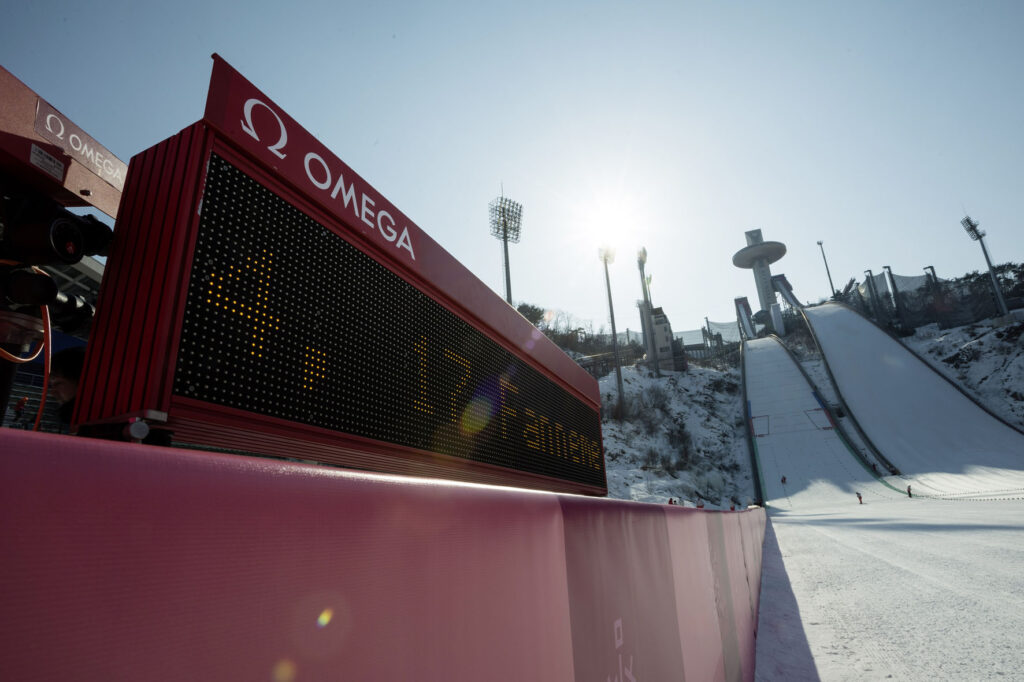
What about Beijing 2022? In addition to bringing its long-used timing technologies, Omega has introduced further innovations designed for specific disciplines at the ongoing Games.
Figure skating is now analysed in much greater depth. Six cameras are placed around the ice, and during single skater competitions, they capture a range of live data, including the height of a jump, the length of the jump, and the amount of time a skater spends in the air. False starts are revolutionised in Beijing. Until now, the sport relied on the judge’s eye to detect any movement of the athlete or their blades before the start of a race. Now, Omega utilizes its image tracking system to visually detect a false start, providing much more reliability in this crucial moment. With one camera positioned in each lane, the system will be visually monitored by officials, who will provide the judge with an immediate indication, should a false start be observed.
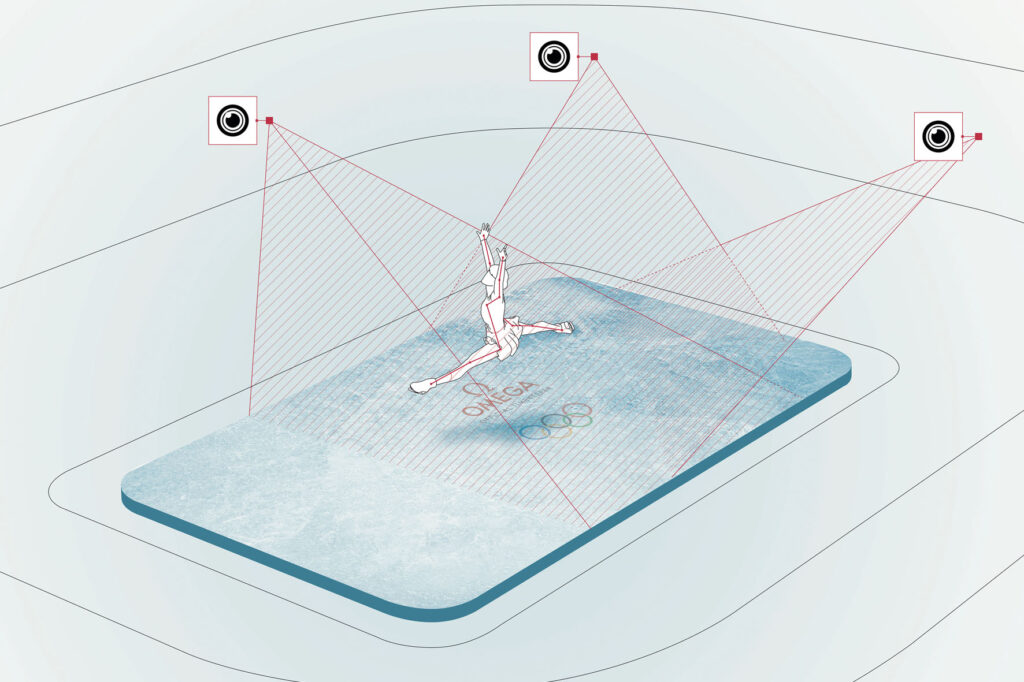
OMEGA AND “OLYMPIC” WATCHES
In short, in 90 years of Olympic timekeeping, the road traveled by Omega has been long and full of innovation. A road that now leads up to 2032, to the centenary partnership between the brand and the Games that will be celebrated in Australia, in Brisbane. Far – but not excessively so in today’s terms – from where it all began, but close to ever greater timing precision.
Let’s not forget, however, that Omega does not only represent excellence in timekeeping, but also and above all in fine watchmaking. For several years now, the Maison of Bienne has been busy creating special editions of some of its iconic watches, dedicated to the different editions of the Olympic Games, both winter and summer. These often become very sought-after watches for enthusiasts and collectors. For the Beijing 2022 Games, Omega did it again!
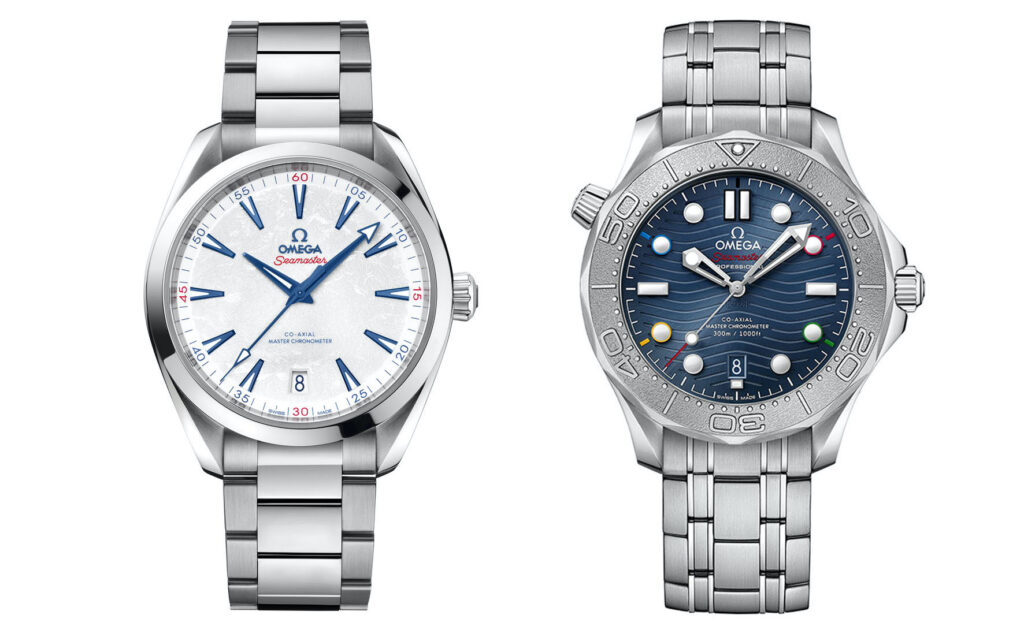
For the Chinese Olympics, they worked on the Seamaster Aqua Terra and on the Seamaster Diver 300M, customizing the two versions with the logos and colors of winter and the Games, in the Beijing 2022 editions. Now that we have told you about Omega’s excellence in timekeeping, don’t worry: we will also talk more extensively about one of these watches. Stay tuned!
By Davide Passoni

